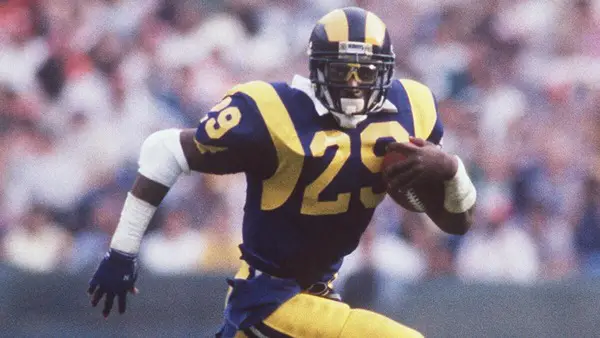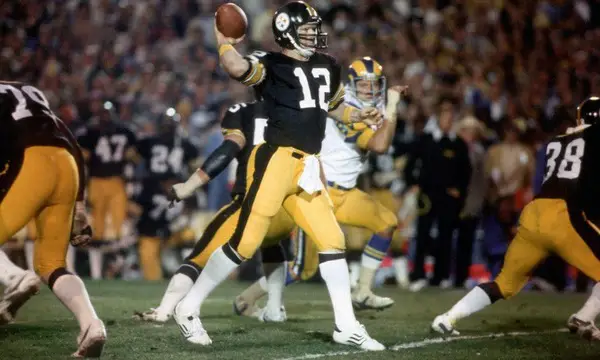Terry Bradshaw, four-time Super Bowl champion quarterback for the Pittsburg Steelers recently critiqued modern quarterback play calling. He lamented the dimished role of quarterbacks in play-calling decisions. Bradshaw expressed concern over the shift towards sideline-originated play calls in today’s NFL. This strategic thinking, he argued, findamentally alters the quarterbacks traditional on-field leadership role. It remains a topic that perhaps hits to close to home for Bradshaw after all these years. Bradshaw, although he called the plays himself, was never known for his mental acumen. Perhaps unfairly, it is a perception that Bradshaw is unlikely to shake, even though the Steelers were the dominant team of the 70s.
Up through the 1940s quarterbacks typically called their own plays with little or no input from the coaches. Things started to change in the 1950s and 1960s as coaches started getting more involved in play calling. As the playbook became more complex, coaches wanted more responsibility and ownership of the plays. Ownership’s expectations of a team evolved at this time as well, as NFL football started to become big money. Ownership more and more wanted to see their teams succeed.
Play Calling from the Sidelines
Pressure on the head coaches escalated as ownership wanted to seem dormant franchises quickly changed to successful ones. Managing play calling became in vogue for the head coach. Plays soon were initially sent in from the sidelines. One method of communicating the plays was alternating offensive guards. Prevalent and popular in the ‘80s, running players in from the sidelines was the norm. Each new play always put the team in danger of exceeding the play clock and being penalized.

Another quicker method of communicating plays were hand signals. Often the signals seemed to be exotic in nature. The hand gestures soon rivalled baseball signals from a third base coach of the day. Classic photos are out there of the quarterback comically squinting and trying to decipher the play that the coaches were trying to send in from the sideline. Improved game management needed to progress.
NFL Quarterback Play Calls
Just an aside, the term “quarterback” dates back to pre 1940s and refers to their positioning being one quarter of the way back behind the offensive line. Hence, we have halfbacks and fullbacks living up to their initial monikers as well. Exceptions to the terms arose; watching the great Eric Dickerson line up deep in the backfield comes mind as an exception to the term “running back.” But the term has endured. Even when halfbacks and fullbacks lined up equal depth to each other in an “I” formation the terms continued. With today’s prevalence of quarterbacks lining up in the shot gun I wonder how soon it will be before “quarterback” is replaced by some other descriptive term. See Osprey Lifestyle gear for hiking, biking and travel
In New York, Giants Offensive Coordinator Mike Kafka and Head Coach Brian Daboll pick anywhere from 30-50 core plays to focus on for an upcoming game. While there are anywhere from 100-150 plays that may be available for the game, it is the 30-50 that the team will primarily practice in the week prior to the game.
The Giants will also have 15-25 situational plays for red zone, 3rd downs and 2-minute drills ready as well. Play calls are decided in part based on field position, down and distance, flow of the game as well as success of previous play calls. During the game, plays are communicated to quarterback Daniel Jones via a radio receiver in his helmet. A play is called with two options depending on the defensive look. Jones then is expected to make changes at the line of scrimmage to adjust for protection schemes or even wide receiver routes.
Barry Schustermann
Follow me on Twitter @BarrySchust
Follow me on Facebook @Barry Schustermann



